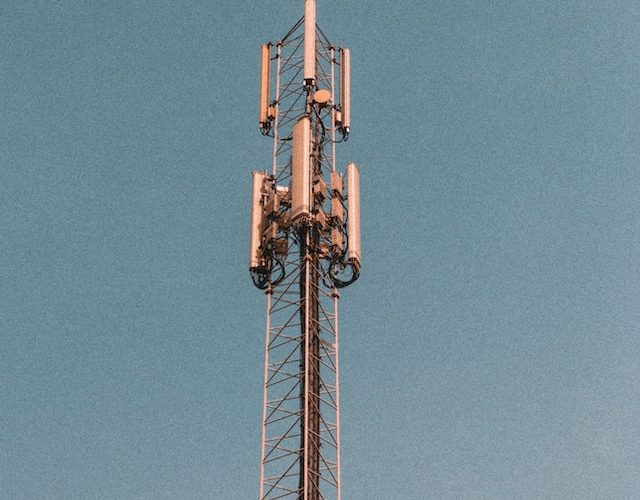Are you ready for the next generation of wireless technology? 5G is expected to revolutionize the way we connect and communicate, with faster speeds and lower latency than ever before. But as exciting as this new era sounds, there are also challenges ahead when it comes to deploying 5G in the United States. In this blog post, we’ll explore what exactly 5G is, the different types of networks available, the obstacles facing its deployment in America, and most importantly – the opportunities that lie ahead for businesses and consumers alike. So let’s dive into this fascinating topic and discover what lies ahead for 5G!
What is 5G?
5G, short for fifth-generation, is the latest wireless network technology that promises lightning-fast speeds and ultra-low latency. It’s the successor to 4G LTE and will enable a wide range of new applications and services like remote surgery, smart cities, autonomous vehicles, augmented reality (AR), virtual reality (VR), and much more.
At its core, 5G uses advanced antenna technologies such as massive MIMO (multiple-input multiple-output) to increase network capacity and coverage. It operates on higher frequency bands than previous generations of wireless networks which helps it achieve faster data transfer rates.
One of the most significant advantages of 5G is its low latency or delay in transmission. This attribute means that devices connected to a 5G network can communicate with each other almost instantaneously allowing real-time interactions between people or machines.
Overall, 5G has enormous potential to transform many aspects of our lives while also unlocking new business opportunities across various industries. However, this cutting-edge technology presents unique deployment challenges for businesses and governments alike.
The Different Types of 5G Networks
The Different Types of 5G Networks
When discussing 5G networks, it’s important to note that there are different types of 5G networks currently being deployed. These include low-band, mid-band, and high-band (also known as millimeter-wave) frequencies.
Low-band frequencies provide a wider coverage area but have lower speeds compared to mid and high band frequencies. Mid-band offers faster speeds than low band while still providing decent coverage. High-band or millimeter-wave provides the fastest possible speeds but with limited range due to its higher frequency.
The type of network used in a particular region will depend on various factors such as population density, geography, available infrastructure and spectrum allocation by the government.
It is expected that most carriers in the United States will use a combination of these three types of networks to provide comprehensive coverage for both urban and rural areas.
As technology continues to evolve along with consumer demands for speedier connectivity options grows stronger each day, we can expect further developments in the realm of 5G networks – including hybrid models that combine aspects from multiple types into one cohesive system.
5G Deployment Challenges in the United States
The deployment of 5G networks in the United States faces several challenges that need to be addressed. One significant challenge is the cost involved in building a nationwide 5G infrastructure. The investment required for deploying 5G technology across the country is massive, and it will take time before all areas are covered.
Another hurdle for 5G deployment is regulatory issues, with local governments having different rules regarding permits and zoning regulations. This can lead to delays in network rollout as companies navigate through various regulatory hurdles.
Additionally, there are concerns about cybersecurity risks associated with 5G technology. As more devices connect to the internet via these networks, there is an increased risk of cyber attacks that could compromise national security.
Moreover, the lack of skilled personnel capable of installing and maintaining these advanced networks remains another challenge facing 5G deployment. Many experts agree that there’s a shortage of qualified workers needed for efficient installation and maintenance of these complex systems.
Some communities have expressed concerns about potential health effects related to exposure from radiofrequency (RF) radiation used by wireless technologies like cellphones but also potentially by emerging technologies such as 5G.
Overcoming these challenges requires collaboration among government agencies, private industry players and local communities alike.
Opportunities for 5G Deployment in the United States
The deployment of 5G networks in the United States brings about several opportunities for businesses, individuals, and the economy as a whole. With faster internet speeds and lower latency rates, 5G technology can revolutionize industries such as healthcare, education, transportation, and entertainment.
The implementation of remote surgery procedures with real-time data transfer becomes more feasible with reliable 5G networks. In education, students can access online learning materials seamlessly without buffering delays while teachers may take advantage of virtual reality classrooms to improve their teaching methodologies.
Transportation systems also stand to benefit from 5G network deployments through autonomous vehicles that rely on fast response times for safety purposes. The entertainment industry is expected to transform with better streaming experiences that allow users to download movies within seconds rather than minutes or hours.
Furthermore, small businesses will have an opportunity to grow by implementing innovative solutions powered by cutting-edge technologies like IoT devices and AI software applications that depend heavily on high-speed connectivity provided by 5G networks. As such there are numerous benefits of deploying 5G networks across America paving way for new developments in various sectors contributing immensely towards economic growth.
Conclusion
5G is the future of connectivity, and it’s here to stay. With its superior speed, lower latency, and increased capacity capabilities, 5G technology will unlock a whole new world of possibilities for businesses and individuals alike.
However, as we’ve discussed in this article, there are still many challenges that need to be overcome before widespread deployment can occur in the United States. The lack of infrastructure investment, spectrum availability issues, and regulatory barriers all pose significant obstacles that must be tackled head-on if we want to maximize the potential of 5G technology.
Despite these challenges though, there are also plenty of exciting opportunities ahead for 5G deployment in the US. From revolutionizing healthcare delivery systems to enabling smart cities’ development and empowering rural communities with better internet access—there’s no limit on what can be achieved with this next-generation network.
In conclusion: While overcoming obstacles won’t happen overnight or without considerable financial investment from both private companies and government entities alike—the promise that comes with 5G technology makes every effort worthwhile. As such, collaboration between stakeholders across various industries must continue so that everyone may benefit from faster speeds and more reliable connections offered by one of the most transformative technologies in modern history – 5G!












